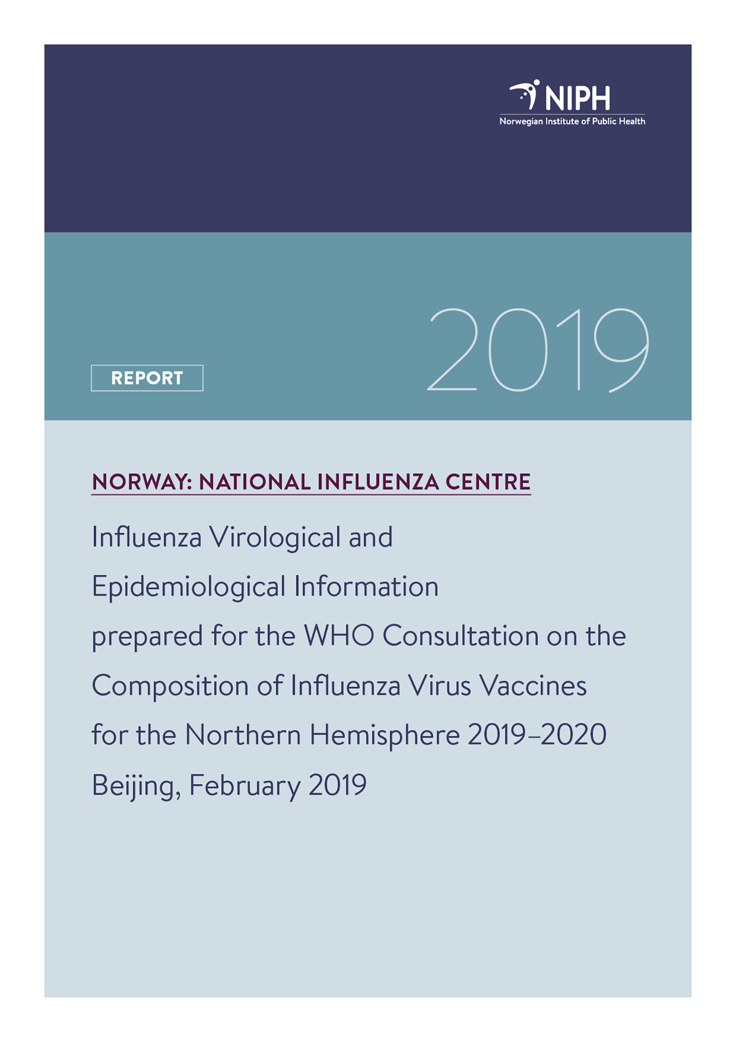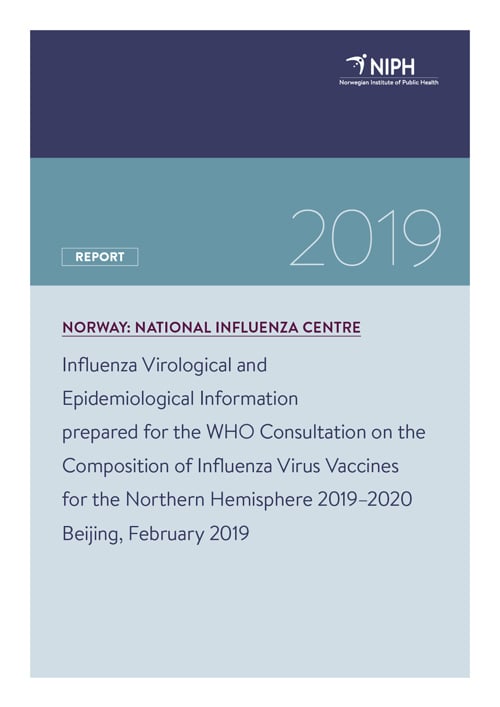Influenza Virological and Epidemiological Information prepared for the WHO Consultation on the Composition of Influenza Virus Vaccines for the Northern Hemisphere 2019–2020 Beijing, February 2019
Rapport
|Publisert
Det nasjonale influensalaboratoriet for WHO i Norge (WHO National Influenza Centre Norway), Avdeling for Influensa, FHI, utarbeider en rapport til WHO hver februar og september som beskriver influensasituasjonen i Norge og som tas med i vurderingen ved bestemmelse av ny influensavaksine. Rapporten går i dybden og tar for seg immuniteten i befolkningen og genetiske karakteriseringer av sirkulerende virus i Norge. Rapporten sammenfatter data og analyser fra den kliniske overvåkingen, virusovervåkingen og den seroepidemiologiske overvåkingen i Norge.
Sammendrag
- Seroepidemiology data from August 2018 indicate that immunity in Norway against circulating influenza A(H1N1) and A(H3N2) viruses is quite strong. Also for the B/Yamagata-lineage virus that caused last winter’s influenza outbreak, there was a marked increase in people with antibody at protective levels.
- Added to this comes the immunity due to the subsequent influenza vaccination campaign in the autumn. Rates of vaccination were raised considerably this year.
- The influenza activity crossed the outbreak threshold during Christmas (week 52/2018) after showing a stagnating trend in the first weeks of the year it was again increasing in week 4/2019. The level of influenza activity at that point remained low.
- In week 4, the number of hospitalisations and ICU admissions was increasing, but the number of admissions was lower compared to the two previous seasons. The highest hospitalisation rates were found in young children (0-4 years) followed by the elderly (60 years or older). So far the hospitalisation rate in young children is similar to the rates observed in 2015-16 and 2017-18. There are fewer hospitalised elderly so far this season compared with the previous two seasons.
- No excess all-cause mortality has been observed.
- Influenza A(H1N1) virus predominates, constituting approximately 75% of detections. The remainder is A(H3N2) virus, with unusually few (<2%) influenza B virus, with B/Yamagata lineage more common than B/Victoria.
- As in earlier A(H1N1)pdm09 dominated seasons, a high proportion of cases are children.
- Two genetically different groups of influenza A(H1N1)pdm09 viruses circulates in Norway, both are assigned to the H1 6B.1 clade.
- Most H3N2 viruses belonged to the 3C.2a1b clade, but separated into two subgroups.
- Only three influenza B-Victoria viruses have been detected so far, the two that have been characterised both were triple deletion variants, but genetically different from each other.
- All influenza B-Yamagata viruses were clade 3 viruses.

